Foodee
Reducing Household Food Waste
Project type:
Personal project
Role:
User research, UX Design, Prototyping
Duration:
3 weeks
The Problem
Food waste is a prevalent problem here in Singapore and it is getting worse
The amount of food waste generated has risen by about 20% over the last decade. In 2019 alone, Singapore wasted 744 million kg of food, which is equivalent to around 50,000 double decker buses.
In fact, households contribute around 50% of the food waste generated in Singapore. According to a study, the average household in Singapore throws away over 5 kg of food each week, of which, more than half of the amount can be prevented.

Most food management apps that are already available in the market are lacking in basic functions and decent UX
I analysed 3 relevant apps that help users to manage their kitchen inventory and reduce food waste.
I found that they tend to be poorly designed and that none of them had a complete offering of features that serve users at every point of their touchpoints. This then became my opportunity for the solution.
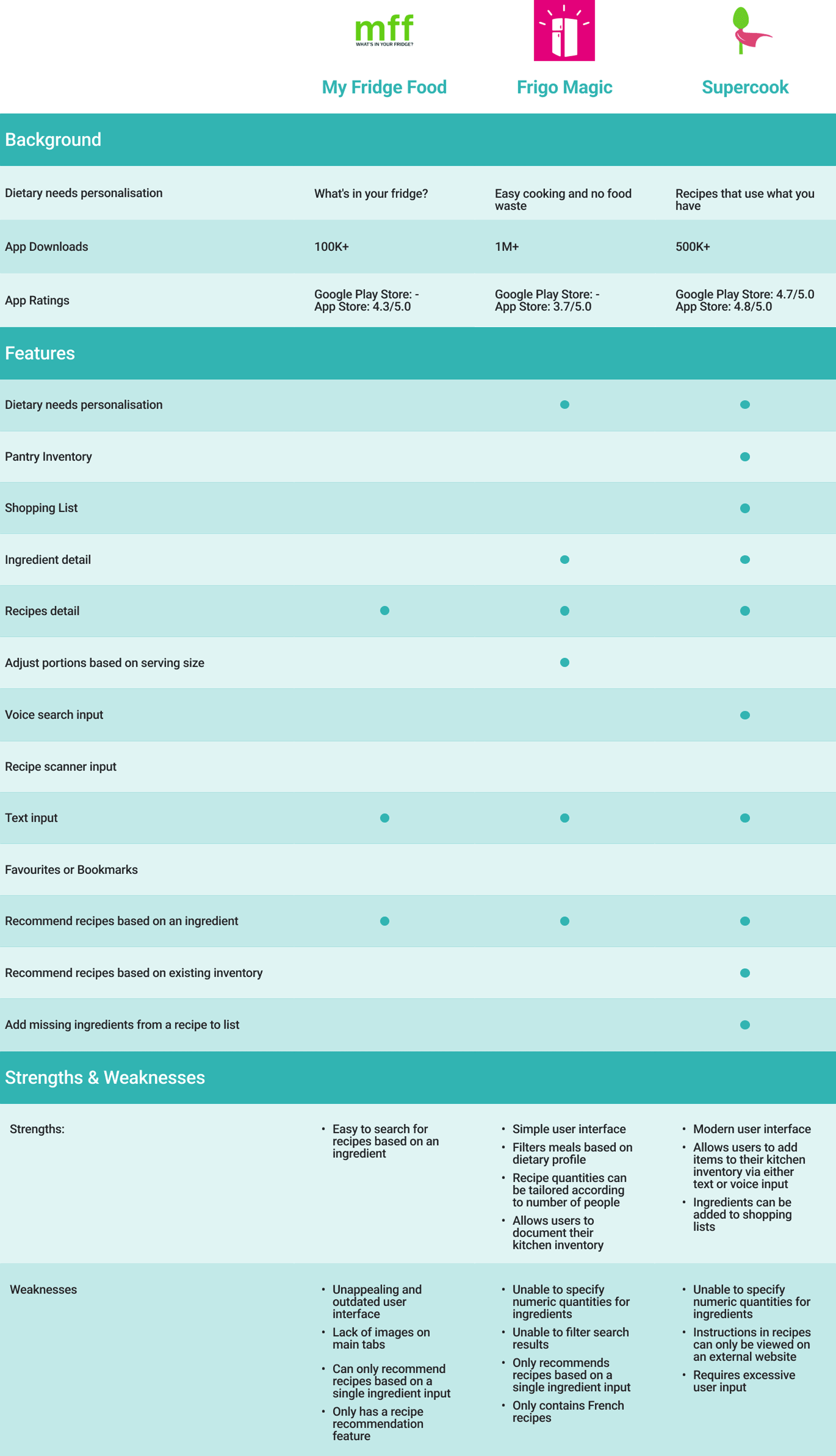
-
Limitation #1
Poorly designed UI elementsThe apps tend to be bloated with excessive UI elements and a generally poor UX experience with visual inconsistency, poor information hierachy, and touch targets.
-
Limitation #2
Functionally independent featuresThe apps feel more like a checklist of features rather than a cohesive whole. For example, users cannot move items in their kitchen inventory directly to the shopping list tab.
-
Limitation #3
Poor UX with excessive user inputsThe apps require frequent manual input from its users which can feel inconvenient and annoying after prolonged usage.
Leftover food is the top reason for food wastage at home
I set up an online survey that received 42 responses from people who cooked at least once a month as part of my quantitative research.
I wanted to understand the issues that people face when it comes to food management at home and whether food waste is indeed a common occurance in households.
83%
prepares meals at home at least once a week
77%
of those who cook at home have leftover food
43%
purchase more than enough food for consumption
85%
throw away food because it has expired
Beginner cooks in particular, struggled to figure out what to do with their leftover ingredients after preparing a meal
I wanted to know the reasons as to why people have leftover food and purchase more than enough food for consumption in the first place. And so I conducted interviews with 6 interviewees who again, cooks at least once a month.
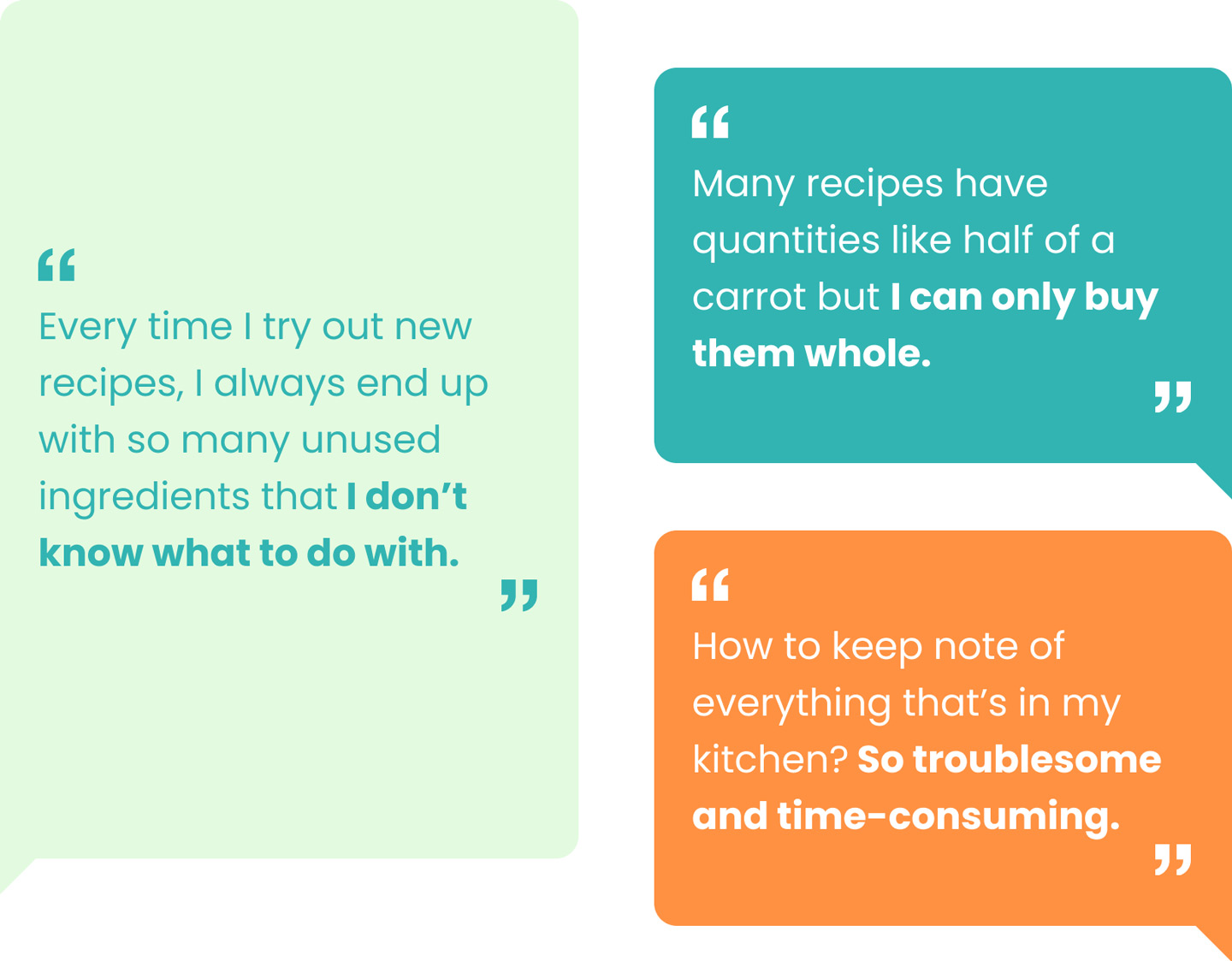
The average household also follows a linear user journey whereby excess food is rarely repurposed
To understand how the problem of food waste actually translates into a real life experience, I mapped out my interviewees' general household food journey.
Based on this, I was able to pinpoint the stages whereby food is wasted.

What is the target audience, and what are their problems?
In my research, I found out that there is one user group who tends to struggle the most with food waste at home: they are beginner cooks who cook for themselves from time to time. As such, our main target users would be students and young professionals.
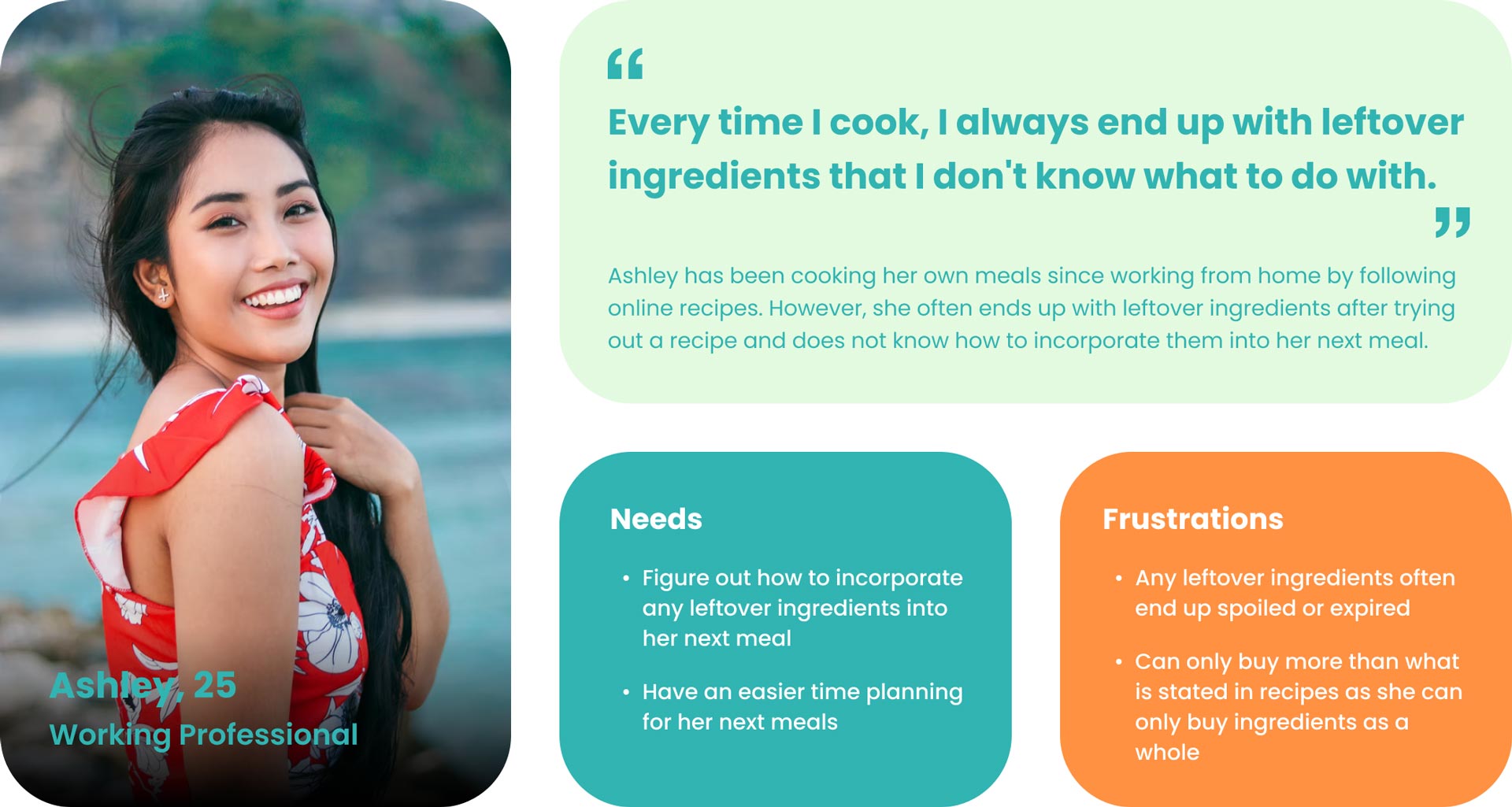

How might we make meal planning using leftover ingredients convenient and fuss-free for beginner cooks like Ashley?
Building on the food journey, we could fight household food waste by switching from a linear to circular economy approach
I revised the current linear food journey map into a circular one. Here, food items can only be:
- Introduced into the kitchen if users do not already have them,
- Removed from the kitchen only via consumption or being used for cooking.
By now, I had a pretty clear vision for what I wanted the app to achieve and have in terms of features. I based my storyboard off the potential features, before showing it to my users to validate my design idea.


The storyboard received an overwhelmingly positive feedback. So I went along with the idea by introducing an appropiate app map.
I had to make sure the Foodee app does not repeat the flaws of the apps that were highlighted in the competitive analysis from before.
So I kept it as simple and intuitive as possible by revolving it around the users' main touchpoints of food management (kitchen), cooking (recipes), and grocery shopping (shopping list), along with a home tab.
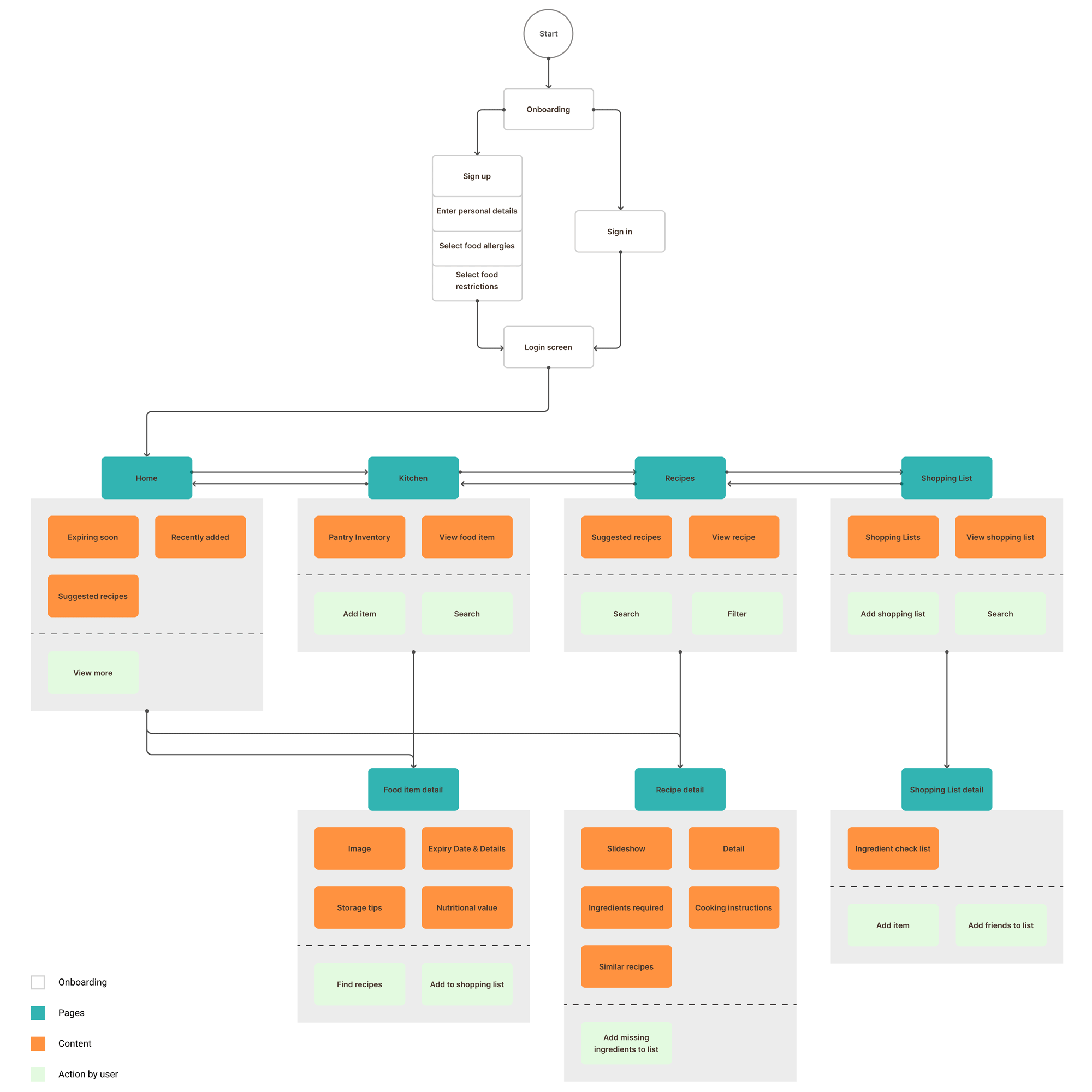


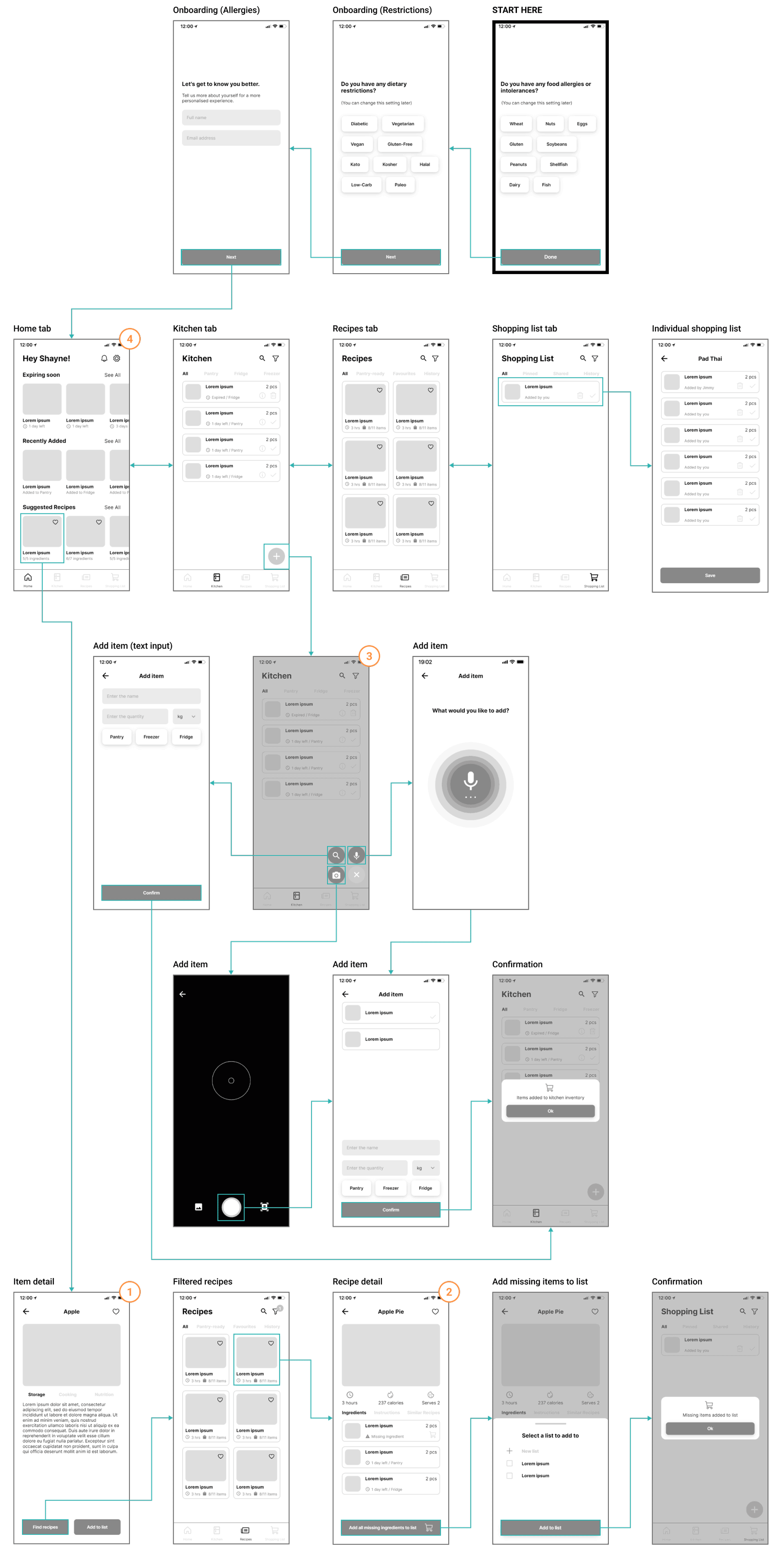
-
Feedback #1
Search function not prominent enoughMany interviewees pointed out that the search icon at top of pages was a little bit too discreet to notice and would much prefer a search bar instead.
-
Feedback #2
Add button difficult to accessAll interviewees preferred accessing the add groceries button feature directly from the navigation bar, rather than having to enter the kitchen tab to do so.
Visual Style
I created a mood-board based on my intended brand attributes of joy, eco-friendly, and relaxed. This way, it can act as a direction for the UI development.

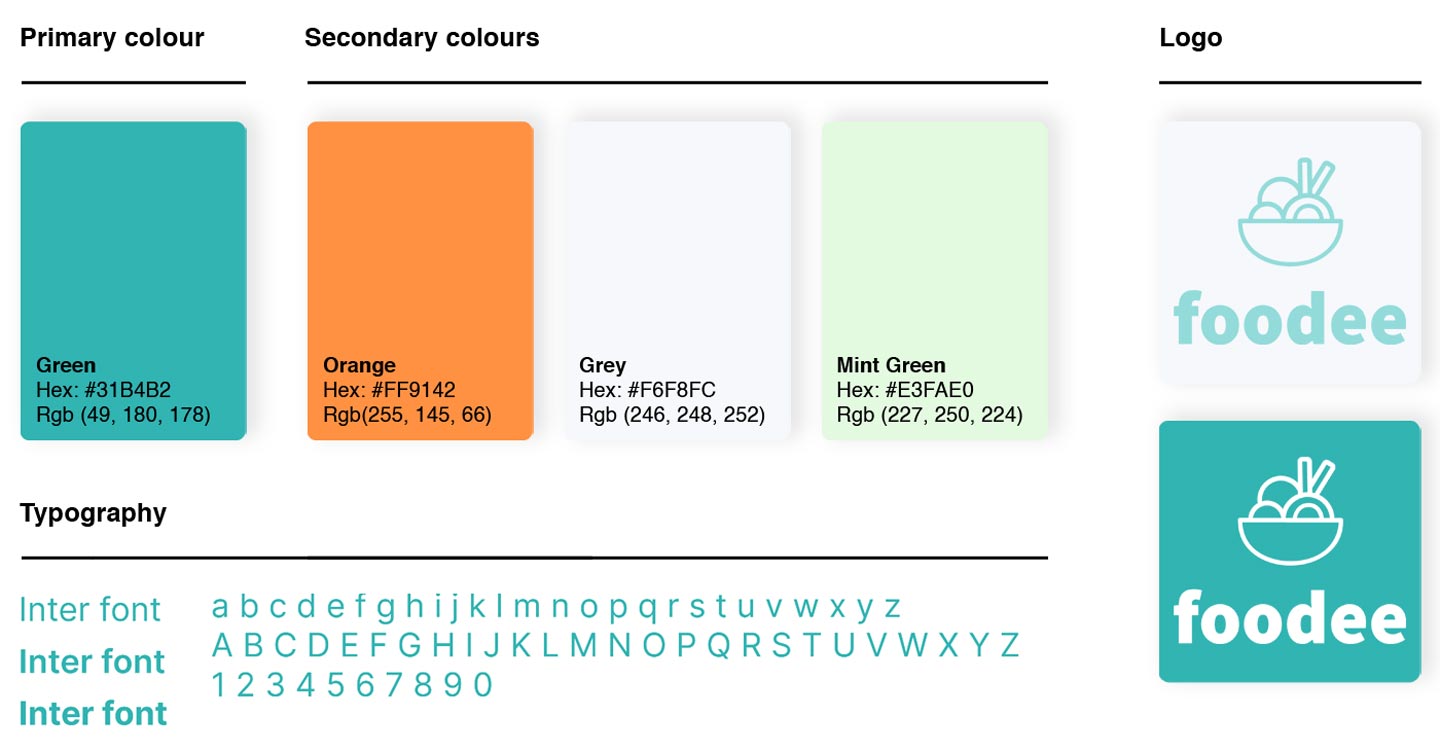
The smooth and rounded Inter font is used given its clear, scalable and legible typography.
Bright colour accents stand out to guide users to interactive areas and elements. This also makes navigation much easier for the older tech-illiterate users.
High-Fidelity Prototype
I continued to refine the wireframes from before into a working prototype, taking into account the feedback I had gathered from the first round of testing with the users.
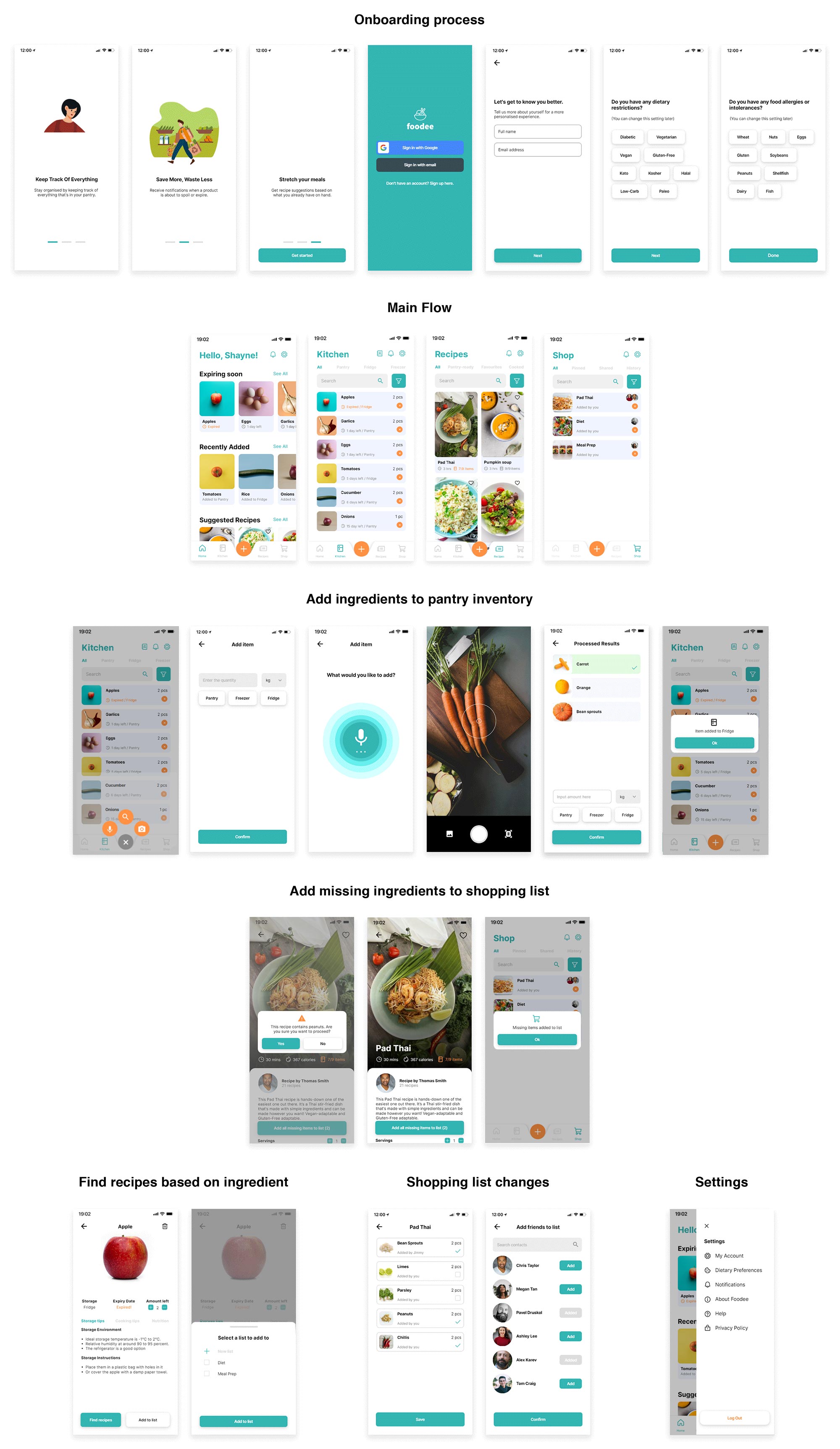
Validating the high-fidelity prototype with users
I wanted to understand what specific challenges the users might face in using the designed app, and how I can address those challenges.
I conducted the test with 5 participants. They were given a list of tasks to complete on the prototype unassisted.
The prototype received almost entirely positive feedback. Most users loved the integrated features and the simplicity of the user interface. The general consensus are summarised below:
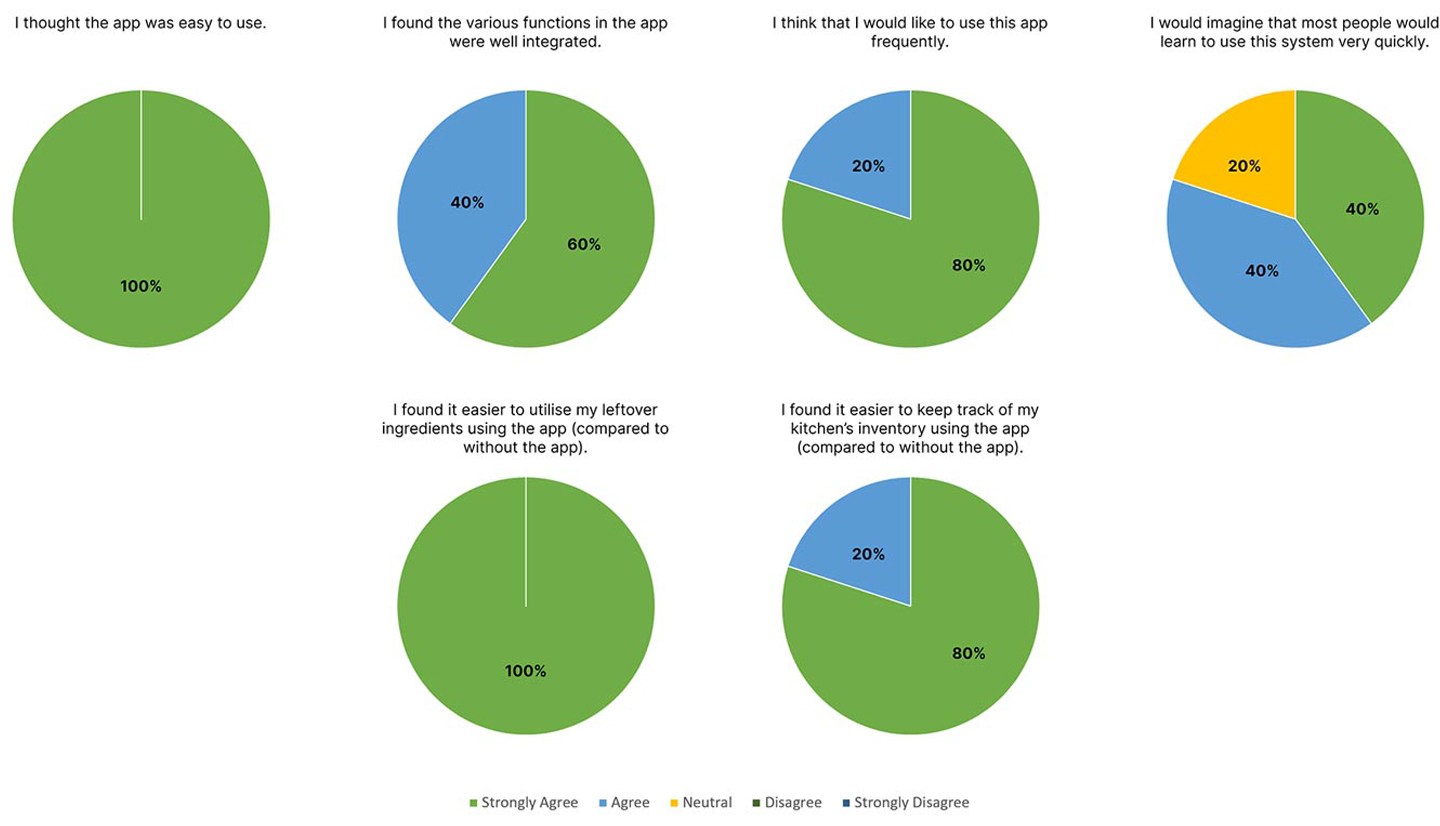
The Solution
A one-stop solution that helps to reduce food waste both in and out of the kitchen
Through Foodee, users are able to track what is stocked at home, explore suggested recipes that can be cooked using the ingredients already available in the pantry, and be reminded when an ingredient is about to spoil or expire.
Document Your Purchases In Seconds
Conveniently add multiple purchases to the kitchen inventory tracker with the built-in receipt reader and barcode scanner.
Find Receipts Based On Ingredients
Get recipe recommendations based on what you already have in your kitchen and add any missing ingredients to a built-in shopping list.
Track Your Grocery Purchases
Keep track of groceries and their expiry dates. Look up recipes based on ingredients so you can use them just in time before they go bad.
Reflections
Takeaways
Working on a UX project by myself is more difficult than I initially thought, given that UX is a team sport, and that UX activities are usually collaborative in nature. However, the key to overcoming this setback is to follow and employ user-centered design methods, because establishing a user-centered foundation is critical for any project. What's important is to continuously work on generating user research and ensure that I don’t just create gorgeous deliverables that nobody wants to use.
Next Steps
If I had more time, I would:
- Experiment with more design concepts and actually test out the app in real-life situations.
- Introduce a flow for users to contribute their own recipes.


